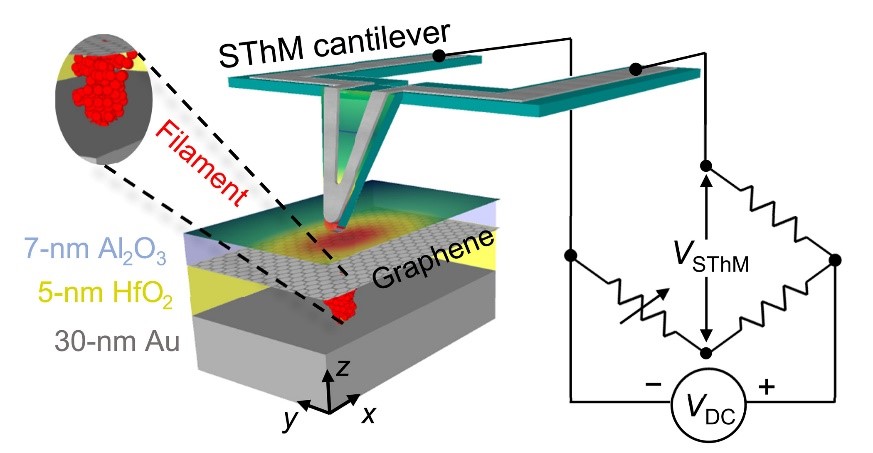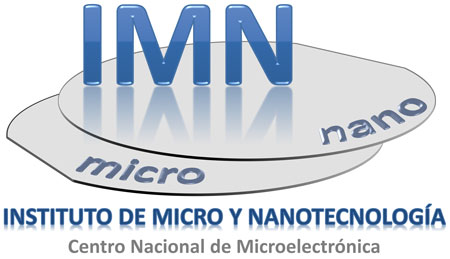Key aspects to improve the performance and efficiency of memory devices.
Published in the prestigious journal Science Advances, this research was led by the University of Stanford (California) and includes the participation of Dr. Miguel Muñoz Rojo recently incorporated at the Institute of Micro and Nanotechnology of Madrid (CSIC) as senior scientist.
Resistive random-access memories (RRAM) hold promise for developing future information technologies with ultra-high storage densities to process unprecedented amounts of data or to contribute to the development of neuromorphic computing. The latter is the basis for new technology that seeks to emulate and understand the functioning of efficient biological neural networks.
RRAM operation relies on the formation (set) and rupture (reset) of nanoscale conductive filaments with diameters as low as few nanometers. These filaments carry enormous power densities that result in high localized temperatures. The heating behavior of these filaments lies at the heart of this technology but little is known experimentally about it. Understanding the temperature of nanoscale filamentary hot spots is key to developing more energy-efficient devices and avoiding thermal cross-talk in future dense RRAM arrays.
This work, carried out at the group of Prof. Eric Pop at Stanford University, has pioneered direct measurement of the temperature of conductive filaments within RRAMs made of hafnium oxide with different top electrodes, like TiN or graphene during device operation. For that purpose, advanced microscopy based techniques were used to carry out thermal maps with nanoscale resolution (i.e. scanning thermal microscopy- SThM and Raman thermometry).
- Thermal measurement process of filaments in RRAM memories using scanning thermal microscopy (SThM)
The results reveal that a conductive filament of 4 nm can lead to a temperature rise above 1000 K above ambient temperature. This solves a fundamental yet elusive problem that has existed in the data storage community for two decades, i.e. imaging the spatial extent and temperature of the filament operation in metal-oxide-based RRAM.
¨The fundamental understanding of the heating in these filaments allow us to incorporate in future thermal engineering approaches in the design of devices and electronic architectures that can result in improved performance and efficiency¨, indicates Dr. Muñoz Rojo, who has a shared first author contribution role in this article with Dr. Sanchit Deshmukh from Prof. Pop’s group. ¨The experimental characterization of the heating in these filaments has been a long lasting challenge due to the complexity to measure localized hot spots at the nano-scale¨.
Thermal engineering of nanoscale electronic devices allows to face one of the challenges of modern society related to the dissipation and waste of energy caused by integrated electronics. Understanding the thermal properties and heat dissipated in electronic devices is essential to improve their performance, energy efficiency and lifetime. Moreover, advanced thermal management of this heat could offer new opportunities to re-use, convert or store this energy that contribute to sustainable circuits.
Dr. Miguel Muñoz Rojo (https://finder.imn-cnm.csic.es/our-team/miguel-munoz-rojo/), recently incorporated at CSIC as permanent senior researcher, dedicates his current efforts to develop a research line within these fields making use of his experience accumulated along his research track.



